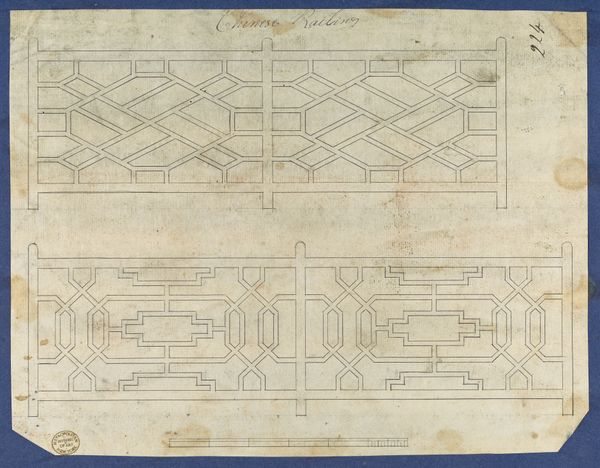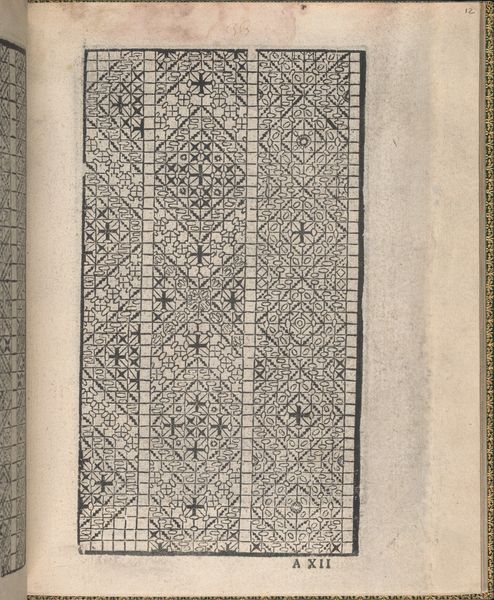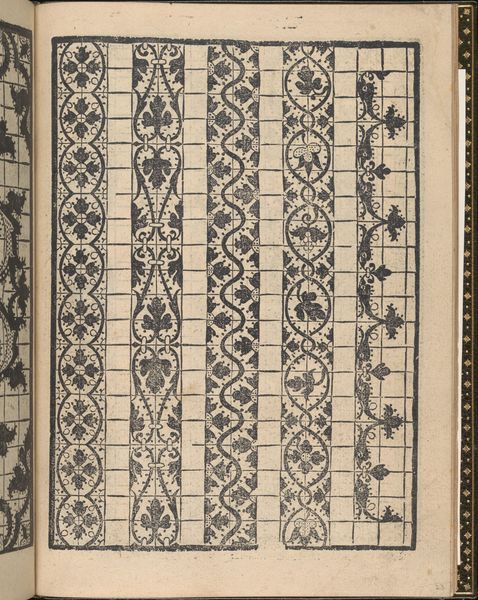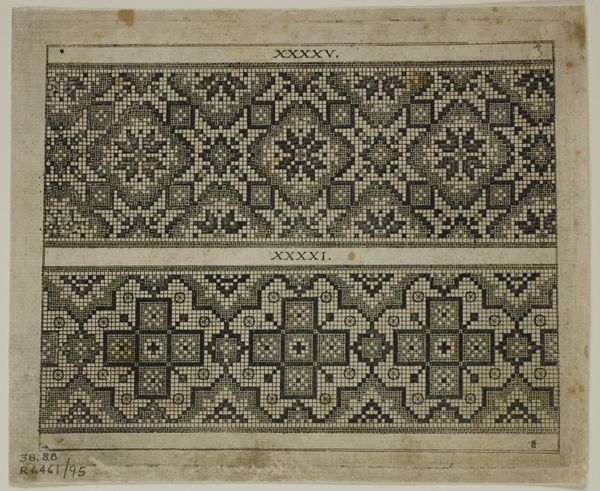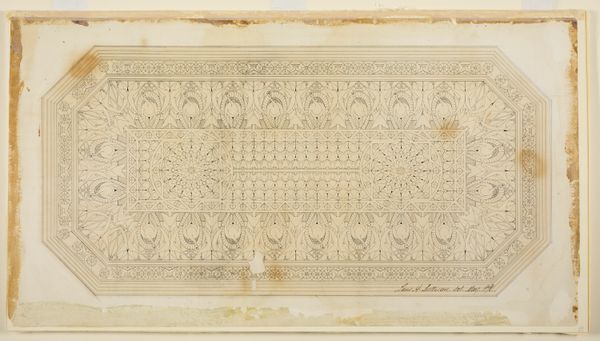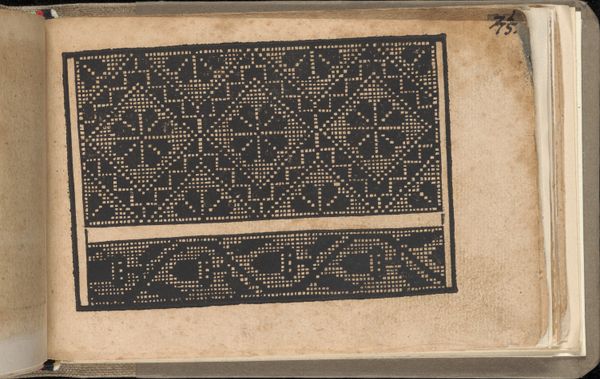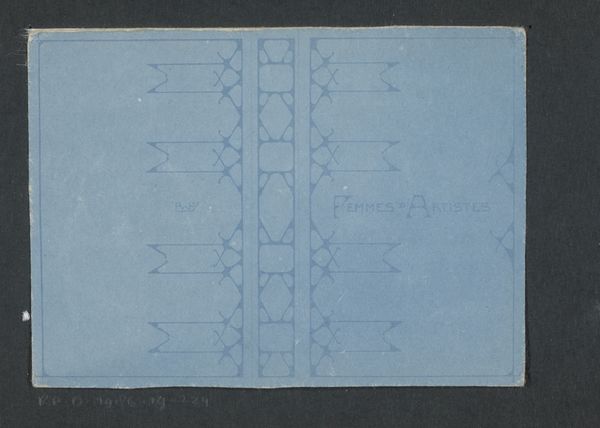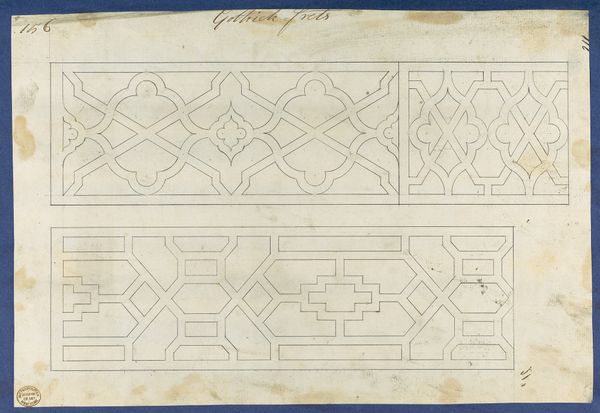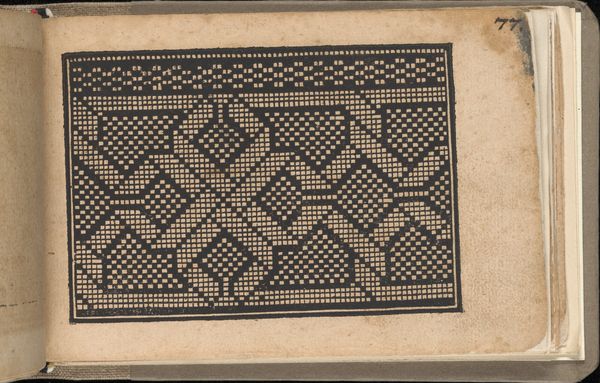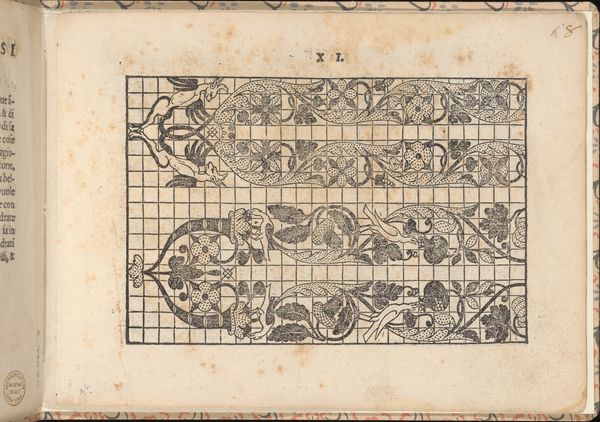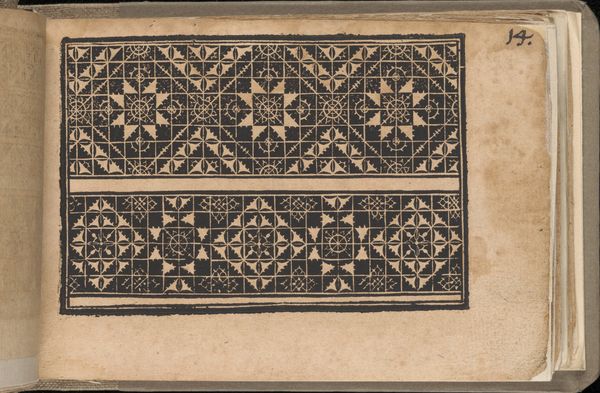
drawing, print
#
drawing
# print
#
geometric
#
decorative-art
#
rococo
Dimensions: sheet: 8 3/8 x 9 5/8 in. (21.3 x 24.5 cm)
Copyright: Public Domain
Curator: This drawing is titled "Frets," part of "Chippendale Drawings, Vol. II," created around 1754. It's a print by Thomas Chippendale, currently residing at the Metropolitan Museum of Art. Editor: My immediate reaction is one of ordered elegance. The repetition of geometric shapes—diamonds, rectangles, hexagons—creates a harmonious and balanced composition. There's a certain understated rhythm here, almost architectural in its precision. Curator: Absolutely. These weren't just abstract forms; they were designs for architectural and furniture ornamentation. Chippendale was deeply influential, shaping the aesthetics of elite interiors. Consider the social function of this refined ornament – the visualization of status and taste within the upper echelons of 18th century society. How did the rise of consumerism and ideas about “taste” influence design during this period? Editor: I’m drawn to the line work itself. Look how confidently each form is rendered, the delicate gradations of the ink washes that imply depth and shadow. There is a fascinating interplay of positive and negative space; each shape resonates because of its counterpart. The use of hatching and stippling also shows the great skill behind its creation. Curator: And while we focus on form, remember the historical context. This was the era of high Rococo, of aristocratic excess contrasted against growing social inequality. Chippendale’s designs reflect this tension. He was catering to wealthy patrons in a world on the cusp of massive social upheaval and class warfare. It is worth pondering how he participated in a culture steeped in inequalities through his patronage. Editor: Your interpretation highlights a crucial dynamic: the formal qualities serving a socio-political framework. But perhaps within these carefully constructed frets we also find something universally pleasing about geometric order, about the clarity of shape, about beauty. What role did this geometry and architectural order play in the design and social symbolism of the day? Curator: These “simple” patterns reflect complex cultural negotiations between luxury, power, and artistry. Each delicate fret signifies a deeper network of meaning about power dynamics and evolving tastes. It’s a dance between visual pleasure and a keen sense of historical unease. Editor: Agreed. It reminds us to look beyond aesthetics, seeking understanding in layers. The harmony in the design hints at a much more turbulent social atmosphere behind its production. Curator: Precisely. Even apparent order speaks volumes, doesn’t it?
Comments
No comments
Be the first to comment and join the conversation on the ultimate creative platform.

